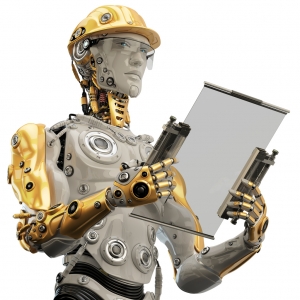Join our online community and be inspired to achieve your goals!
VIEW OUR FACEBOOK PAGEThe future of work: the way you work is changing

Cognizant’s Center for the Future of Work recently released a report on the most powerful technological, business and societal trends shaping tomorrow’s workplace. In this article, we bring you some of the biggest takeaways and most interesting insights. The main takeaway: things are set to change dramatically.
The report – ‘From/to: The future of your work – everything you wanted to know but were afraid to ask’ – explored five main areas:
- The Way We Work: How we do what we do.
- The Tools of Work: The apps, systems, networks, tools and processes that we use to work.
- The Aesthetics of Work: What work looks like; how it feels.
- The Issues with Work: When and why work is work.
- The Meaning of Work: What gets us out of bed and makes us proud.
Below we look at key insights in the first area – The Way We Work. In the coming months we’ll delve into other areas of the report, so keep an eye out.
The way we work – what’s changing?
Here’s what the report predicted will change about the way we work.
- From hierarchy to ‘wirearchy’: Wirearchies will sit beside hierarchies. A wirearchy sees people collaborating and building connections to achieve success. A balance of some structure (from a hierarchy) with more fluid authority and individual empowerment (from a wirearchy) will improve productivity through collective collaboration rather than individual excellence.
- From jobs to tasks: Jobs will be deconstructed into tasks. This will be driven by artificial intelligence (AI) or intelligent machines, but whole jobs won’t be automated – just certain aspects. Work will be divided between humans and machines at the task level with machines handling the “science of the job” while humans master the “art of the job”.
- From 8×5 to 10×4: The 40-hour, five-day working week is dead. With many of us now swapping 9–5 for 5–9, checking email first thing in the morning and last thing at night, a compromise is emerging. We’re becoming unchained from a physical workplace and more able to manage our own work time.
- From PAs to RPAs: The new PA (personal assistant) is an RPA: a robotic personal assistant. Many of us already use RPAs – Siri, Alexa and GPS tools are all examples. In the future, robots won’t steal our jobs, they’ll make them easier. Leveraging these new RPAs will help us get back around 15% capacity (or more), which we’ll need to learn the skills of tomorrow and to think strategically.
- From buying to leasing: Ownership has long been a measure of success for many in the Western world, but the link between ownership and affluence is waning. Younger buyers are questioning why they’d spend $40,000 on a car that sits idle for 23 hours a day, or why they should rent office space that sits empty for much of the time. For a generation of consumers who will never be able to afford their own home, there’s a growing number of alternatives. Leasing a home; using public transport, share cars or ridesharing services; renting shared office space only when it’s needed; and hiring clothes for any occasion – it’s all becoming the norm. This trend is already driving entire new industries and additional jobs – this looks set to continue.
- From bad robots to good humans: One thing movies have taught us is that although robots do many good things, they can also do unimaginably bad things – from fake videos and inaccurate medical recommendations to privacy violations. Artificial intelligence gone wrong reflects the fact that human bias and mistakes can exist in machine learning, from the creation of an algorithm to the interpretation of the data.
We know from experience that we need to ensure there are human norms (and human morality) behind a machine’s design. This means humans will need to remain in the driver’s seat when designing and taming robots, and figuring out how intelligent machines fit into a working world that is, and will ultimately remain, human. Machine designers need to ensure control is passed back to humans when certain baselines and thresholds are exceeded, and ethical values must be injected into intelligent machines that guide outcomes. Good humans are still needed to avoid robots turning bad.
Work is changing and the way we do our job tomorrow will undoubtedly be different from how we do it today. From technology to business models to demographics, there are many trends shaping the future of work. Are you ready for it?
Worried you don’t have the skills needed for changes happening in your industry? Do you want to improve your future with a new career or job? Our Career Counselling and Coaching Services can help. Or perhaps you’re ready to take the next step and need help developing a tailored Job Search Strategy? To find out more, read about our services.

